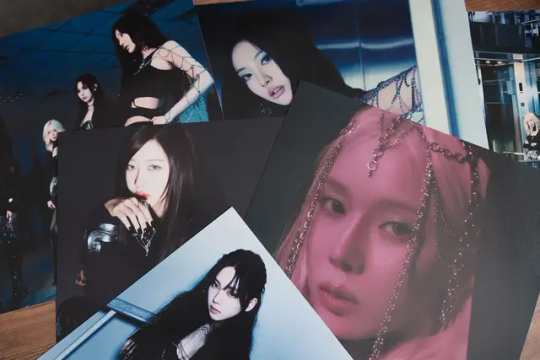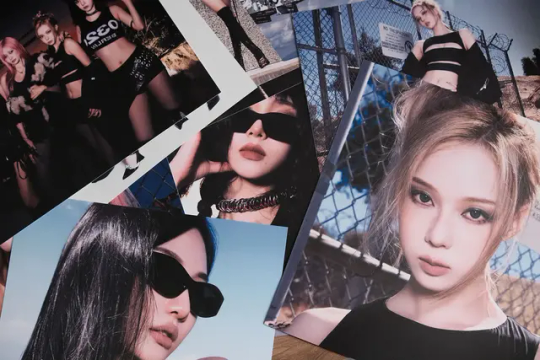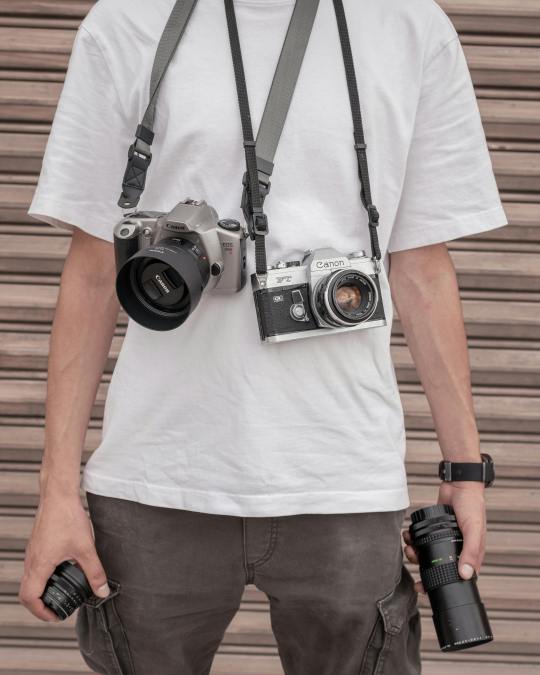Urban scenes, moody tones, and analog soul. SnapGroove is where photography meets feeling
Don't wanna be here? Send us removal request.
Text

Summer film recipes for Fujifilm cameras
0 notes
Text

Ginza 1980 - Fujifilm film simulation recipe
0 notes
Text

Fujifilm X-T4 // SIRUI Sniper 23mm f1.2
Ginza Midnight Recipe
0 notes
Text

Fujifilm X-T4 // SIRUI Sniper 23mm F1.2
Film Recipe: Teal Obscure
Best Film Recipes For Night Photography
0 notes
Text
youtube
1 note
·
View note
Text
How To Hang K-Pop Posters



0 notes
Text
K-pop vinyl records are hotter than ever, with limited editions selling out fast! Whether you're a longtime fan or just starting your collection, knowing where to buy and what to look for is key.
0 notes
Text

Camera Aperture Guide: Mastering Light and Focus in Photography
0 notes
Text
Top 5 Camera Gear
Introduction

Every photographer, whether a beginner or a seasoned pro, needs reliable gear to capture the perfect shot. The right equipment not only enhances image quality but also makes shooting more efficient. If you're looking to upgrade your camera setup or just starting, having the right essentials will ensure you're always ready to snap stunning images. Here’s a breakdown of the top five must-have camera gear every photographer should own.
1. A High-Quality Camera Body
Why is a good camera body essential?
A camera body is the foundation of every photography setup. Whether you prefer a DSLR or a mirrorless camera, having a model with a high-resolution sensor, fast autofocus, and great low-light performance can significantly improve your shots.
Some of the best options include the Canon EOS R5, Sony A7 IV, and Fujifilm X-T5. These cameras offer excellent image quality, reliable autofocus, and versatility for different photography styles. While camera bodies evolve with technology, choosing one that fits your needs and budget is crucial.
2. A Versatile Lens Collection
Why do lenses matter more than the camera body?
A high-quality lens can make a bigger impact on your photography than the camera itself. Investing in the right lenses allows you to capture sharper images, achieve better depth of field, and work in various lighting conditions.
50mm f/1.8 (Prime Lens) – A budget-friendly must-have for portraits, street photography, and low-light situations.
24-70mm f/2.8 (Zoom Lens) – Ideal for travel, events, and everyday photography.
70-200mm f/2.8 (Telephoto Lens) – Perfect for sports, wildlife, and portrait photography.
If you shoot with Fujifilm, lenses like the XF 23mm f/1.4, XF 35mm f/2, and XF 50mm f/1.0 provide outstanding image quality and versatility.
3. A Sturdy Tripod
Why is a tripod a must-have?
A tripod is essential for long exposure shots, landscape photography, astrophotography, and even vlogging. A good tripod provides stability, eliminates camera shake, and allows for more creative compositions.
Some of the best tripods include the Manfrotto Befree Advanced, Peak Design Travel Tripod, and Gitzo Series 1 Traveler. When choosing a tripod, consider factors like weight, height, and build quality. Carbon fiber models are lightweight yet sturdy, making them ideal for travel photographers.
4. External Flash or Continuous Lighting
Why is lighting important?
Lighting is one of the most critical factors in photography. An external flash or continuous light source helps control exposure, reduce harsh shadows, and improve image sharpness in low-light situations.
For flash photography, the Godox V1, Canon Speedlite 600EX II-RT, and Nikon SB-700 are excellent choices. If you prefer continuous lighting, LED panels like the Aputure AL-M9 or the Godox SL60W work well for portraits and product photography.
5. Memory Cards and Extra Batteries
Why should you always carry extras?
Running out of storage or battery life during a shoot is frustrating. High-speed memory cards ensure quick write times, especially when shooting in RAW or 4K video.
Recommended memory cards include the SanDisk Extreme Pro, Lexar Professional, and Sony Tough Series. For batteries, always carry an extra set compatible with your camera. Popular options include Canon LP-E6N, Sony NP-FZ100, and Fujifilm NP-W235.
Final Thoughts
Having the right camera gear makes a huge difference in your photography journey. A quality camera body, versatile lenses, a sturdy tripod, reliable lighting, and extra storage and power ensure you're always prepared for any shooting scenario. Check out the full list of the best camera gear and camera accessories for travel. Investing in these essentials will not only improve your photography but also make your workflow smoother and more enjoyable.
0 notes
Text
Street Photography in Singapore

Street photography offers a raw, candid lens into the heart of urban life, capturing the essence of everyday moments, unfiltered and spontaneous. In Singapore, this genre of photography holds a special place, as the city-state is a blend of rich culture, modern architecture, and diverse communities, making it an exciting playground for photographers. Whether it’s the bustling hawker centers, the colorful streets of Little India, or the serene spaces within the Gardens by the Bay, Singapore’s streets provide endless opportunities for photographers to showcase the vibrancy of life in this cosmopolitan city.
The Art of Street Photography
Street photography is not just about taking pictures of people on the streets; it’s about storytelling. It’s about capturing fleeting moments that might otherwise go unnoticed, whether it’s a smile exchanged between strangers, a child’s curious gaze, or the contrast between the old and new in the city’s architecture. The beauty of street photography lies in its unpredictability – each shot is a chance to capture something new, something that tells a unique story about the place and the people in it.
In Singapore, where modern skyscrapers sit next to colonial-era buildings, and where people from different ethnicities and backgrounds coexist harmoniously, street photography is a powerful way to capture the essence of the city’s diversity. The mix of traditional and contemporary elements allows for visually striking compositions, offering photographers a wide array of subjects and settings.
Iconic Locations for Street Photography in Singapore

Chinatown: With its vibrant colors, narrow alleyways, and the hustle and bustle of street markets, Chinatown offers a perfect backdrop for street photographers. The blend of Chinese heritage with modern commerce creates dynamic contrasts, from traditional temples to contemporary street art.
Little India: Known for its colorful buildings, busy streets, and lively markets, Little India is a photographer's paradise. The area is rich in culture, with stunning temples, vibrant sari shops, and delicious food stalls that offer endless photographic possibilities. The energy of the place is palpable, making it a great spot for capturing candid moments.
Hawker Centers: Singapore’s hawker centers are not just places to eat; they are hubs of social interaction. The scenes of locals enjoying their meals, food vendors preparing dishes, and the occasional tourist discovering Singapore’s unique culinary offerings provide ample opportunities for street photographers.
Marina Bay Sands and Gardens by the Bay: For those interested in modern architecture and landscapes, the area around Marina Bay Sands offers stunning urban backdrops. The iconic infinity pool, the futuristic design of Gardens by the Bay, and the reflection of the skyline in the water are all great subjects for architectural and landscape street photography.
Kampong Glam: Known for its Malay heritage, Kampong Glam features the majestic Sultan Mosque and a mix of traditional shops and modern cafés. The vibrant street art, coupled with the cultural richness of the neighborhood, makes it another prime location for street photography.
Challenges and Opportunities in Street Photography in Singapore
Challenges:
Cultural Sensitivity: Singapore is a multicultural city, and while street photography is embraced, it’s important to respect the privacy and cultural norms of individuals. Capturing people in candid moments without their consent can sometimes lead to uncomfortable situations. Being sensitive to the feelings of others and avoiding confrontational or intrusive shots is essential.
Strict Regulations: Singapore has a reputation for being a city with strict laws, and photography is no exception. While there are no specific laws that prohibit street photography, photographers should be aware of rules regarding photography in certain locations. For instance, taking photos of government buildings or military sites may require permission. Always be respectful of public spaces and follow any signage or guidelines about photography.
Crowded Spaces: Singapore is known for being densely populated, especially in popular areas like Orchard Road and Chinatown. This can make it challenging to get a clear shot without crowds interfering. However, this also presents an opportunity to capture the energy and liveliness of the city – the crowds themselves become part of the narrative.
Opportunities:
Diverse Cultural Settings: Singapore’s melting pot of cultures, from the Malay, Chinese, Indian, and Western communities, provides photographers with an abundance of subjects to capture. The blending of different cultural practices, festivals, and traditions allows for varied and interesting compositions.
Urban and Natural Contrast: Singapore is often described as a "garden city," and street photographers can experiment with capturing the balance between nature and urbanization. Iconic green spaces like the Singapore Botanic Gardens and the futuristic Supertree Grove contrast beautifully with the high-rise buildings and busy streets, allowing photographers to experiment with both natural and urban elements.
Innovative Street Art: Singapore has seen an increase in street art and public murals, with areas like Tiong Bahru and Kampong Glam offering a canvas for local and international artists. These murals provide unique backgrounds for street photographers, adding a contemporary and artistic flair to their shots.
Street Photography Tips for Photographers in Singapore

Blend In: The best street photography often comes from a place of subtlety. In Singapore, as in any other city, it’s important to blend into the surroundings. Avoid drawing attention to yourself, and let your subjects remain unaware of the camera, which allows you to capture more natural moments.
Use Natural Light: Singapore’s tropical climate means that the lighting conditions are often bright and harsh during the day. However, this can be used creatively to create high contrast shots. Early morning or late afternoon provides softer, golden-hour light, which can add warmth and depth to your images.
Keep Your Gear Simple: Street photography thrives on spontaneity, so keep your gear simple and portable. A lightweight mirrorless camera or DSLR with a fast prime lens (like a 35mm or 50mm) is often ideal for street photography, as it allows you to react quickly to moments as they unfold.
Look for Juxtaposition: One of the strengths of Singapore as a location for street photography is the contrast between the modern and the traditional. Look for moments where these contrasts are highlighted – for example, a businessman walking past a colorful temple or a local wearing traditional attire in front of a modern shopping mall.
Stay Patient: Sometimes the best moments in street photography take time to unfold. Be patient, observe your surroundings, and wait for the right moment to capture the essence of a scene. Often, the most powerful shots come from being in the right place at the right time.
Conclusion
Street photography in Singapore offers a unique way to document the multifaceted character of a global city. With its blend of old and new, multicultural communities, and vibrant public spaces, the city provides an endless canvas for photographers. Whether capturing the energy of its streets, the architectural beauty, or the diverse people, street photography in Singapore tells stories that reflect the pulse of a dynamic and constantly evolving urban landscape. For both local and visiting photographers, Singapore is a city that promises inspiration at every corner.
0 notes
Text
Best Fujifilm Recipes for Street Photography: Top Picks

Street photography thrives on creativity and the ability to capture fleeting moments with unique perspectives. For Fujifilm users, custom film simulations—or Fujifilm recipes—provide a powerful way to enhance the artistic appeal of your street photos without the need for extensive editing. With a variety of film-like styles to choose from, these recipes allow you to set the mood, emphasize textures, and highlight emotions directly in-camera.
In this guide, we’ll explore some of the best Fujifilm recipes for street photography, why they work so well, and how to use them effectively.
Why Fujifilm Recipes Work for Street Photography
Fujifilm custom simulations are an ideal match for street photography due to their flexibility and aesthetic appeal. Here’s why they stand out:
Film-Like Results: Recipes mimic the look of analog film, which aligns with the timeless nature of street photography.
Efficiency: Shooting with recipes lets you skip post-processing, making your workflow quicker.
Mood Control: Recipes allow you to set a tone—whether gritty and dramatic or light and nostalgic.
Inspiration: Experimenting with different recipes can inspire new approaches to your street photography.
Top Fujifilm Recipes for Street Photography
1. Classic Chrome for a Timeless Look

Classic Chrome is one of Fujifilm’s most beloved film simulations, offering muted colors and soft contrasts. This recipe is perfect for capturing the raw essence of street life without overwhelming the viewer.
Settings:
Film Simulation: Classic Chrome
Highlights: -1
Shadows: +1
Color: -2
Noise Reduction: -2
Grain: Weak
White Balance: Auto, +1 Red, -1 Blue
This recipe works best in daylight and overcast conditions, emphasizing textures and subtle color variations.
2. Acros for Black-and-White Grit

When it comes to black-and-white street photography, Acros is unbeatable. It delivers rich blacks, stunning tonal gradients, and a nostalgic film feel.
Settings:
Film Simulation: Acros (Green Filter)
Highlights: +2
Shadows: +2
Noise Reduction: -4
Grain: Strong
This recipe is ideal for capturing high-contrast scenes or adding a dramatic edge to your street shots.
3. Kodachrome-Inspired for Vibrant Stories

Inspired by the classic Kodachrome film, this recipe offers bold colors and a cinematic feel. It’s a great choice for lively street scenes, markets, or festivals.
Settings:
Film Simulation: Classic Chrome
Highlights: -1
Shadows: 0
Color: +2
Sharpness: +1
Grain: Weak
White Balance: Daylight, +2 Red, -1 Blue
The Kodachrome-inspired recipe shines in golden hour light, bringing a nostalgic warmth to your photos.
Tips for Using Fujifilm Recipes in Street Photography
Know Your Light: Different recipes excel in specific lighting conditions. Experiment with settings during sunny days, overcast weather, and nighttime scenes.
Pre-Save Custom Settings: Save multiple recipes as custom settings in your camera for quick access.
Focus on Composition: Recipes enhance the aesthetic, but strong composition remains key to impactful street photography.
Experiment Freely: Don’t hesitate to tweak recipes to suit your unique vision or the vibe of your location.
Finding Inspiration for New Recipes
The Fujifilm community is full of photographers who share their favorite film recipes online. Websites like Shutter Groove or forums dedicated to Fujifilm users are great resources to explore new looks for your street photography. Don’t forget to test recipes in different scenarios to understand how they perform.
Final Thoughts
Film simulation recipes for street photography are a treasure trove of creativity for street photographers. Whether you prefer the muted tones of Classic Chrome, the dramatic contrasts of Acros, or the vibrant nostalgia of Kodachrome-inspired settings, there’s a recipe to match your vision. Take your street photography to the next level by experimenting with these recipes, and see how they can bring new life to the everyday moments you capture.
5 notes
·
View notes